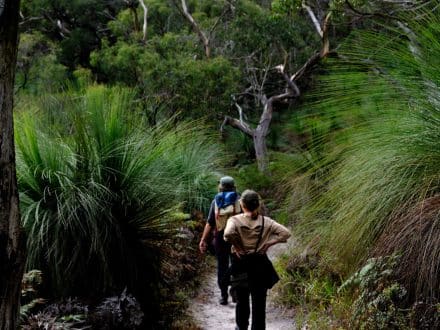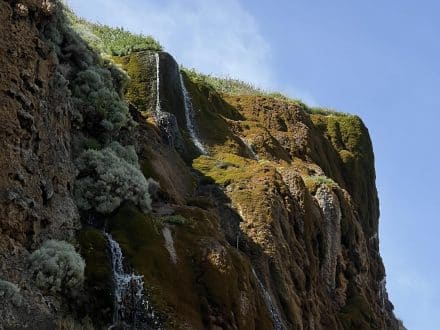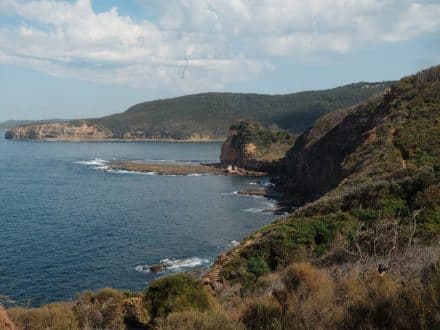For most visitors to Tasmania, the state’s glittering east coast is high on the road trip bucket list. Its beaches are dotted with giant red lichen-covered boulders, around each corner lies a sparkling blue ocean vista and every winding country road has countless turn-off signs to seemingly more wineries and distilleries than one could feasibly visit in a whole lifetime (not that we’re complaining – we took full advantage during our time there recently, especially since it was our first time visiting).
But few people realise that one of the best ways to experience this coastline is actually by venturing a little further inland and seeing it from a slightly different perspective.
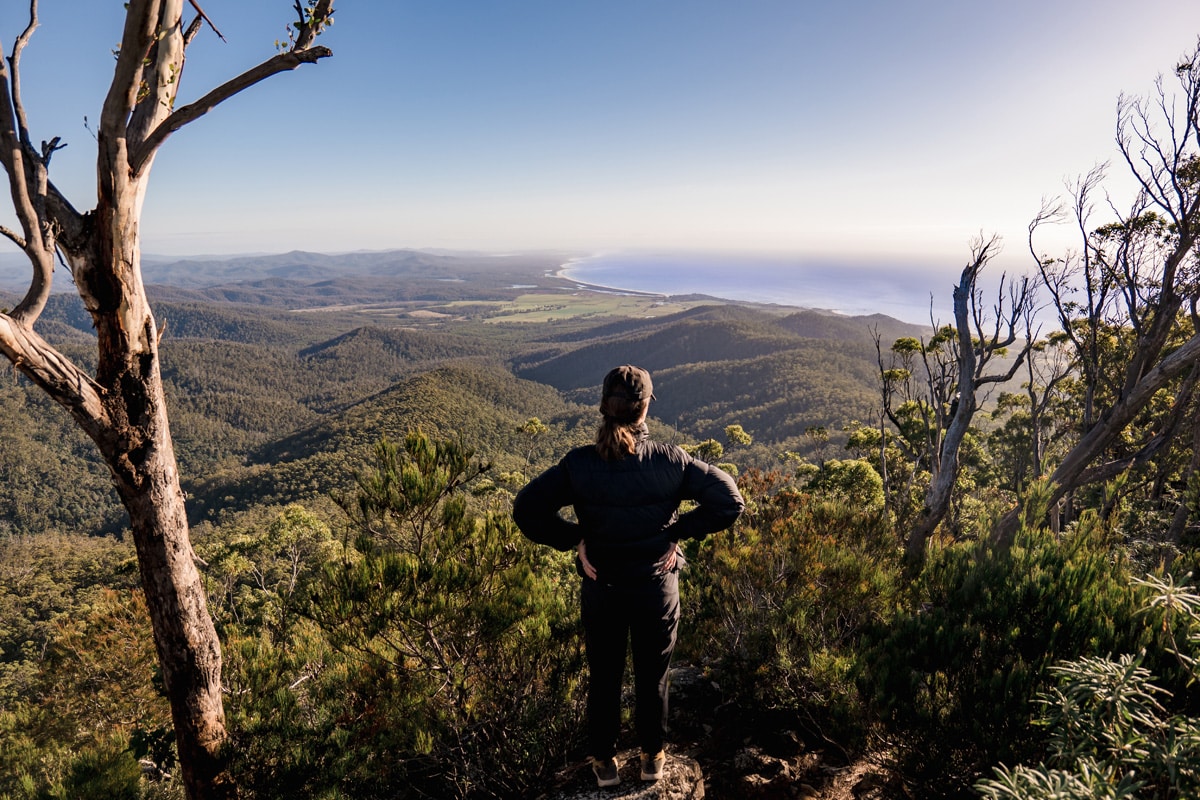
My partner and I discovered this ourselves while searching for a hike to tick off that would satisfy both our avid hikers and new parents personas. Something challenging enough to instil us with a sense of accomplishment, yet short enough to enable us to get our small son (who’d be strapped to one of us the entire way) up and back in time for his first nap of the day which, in fairness, is usually enough of an accomplishment in itself.
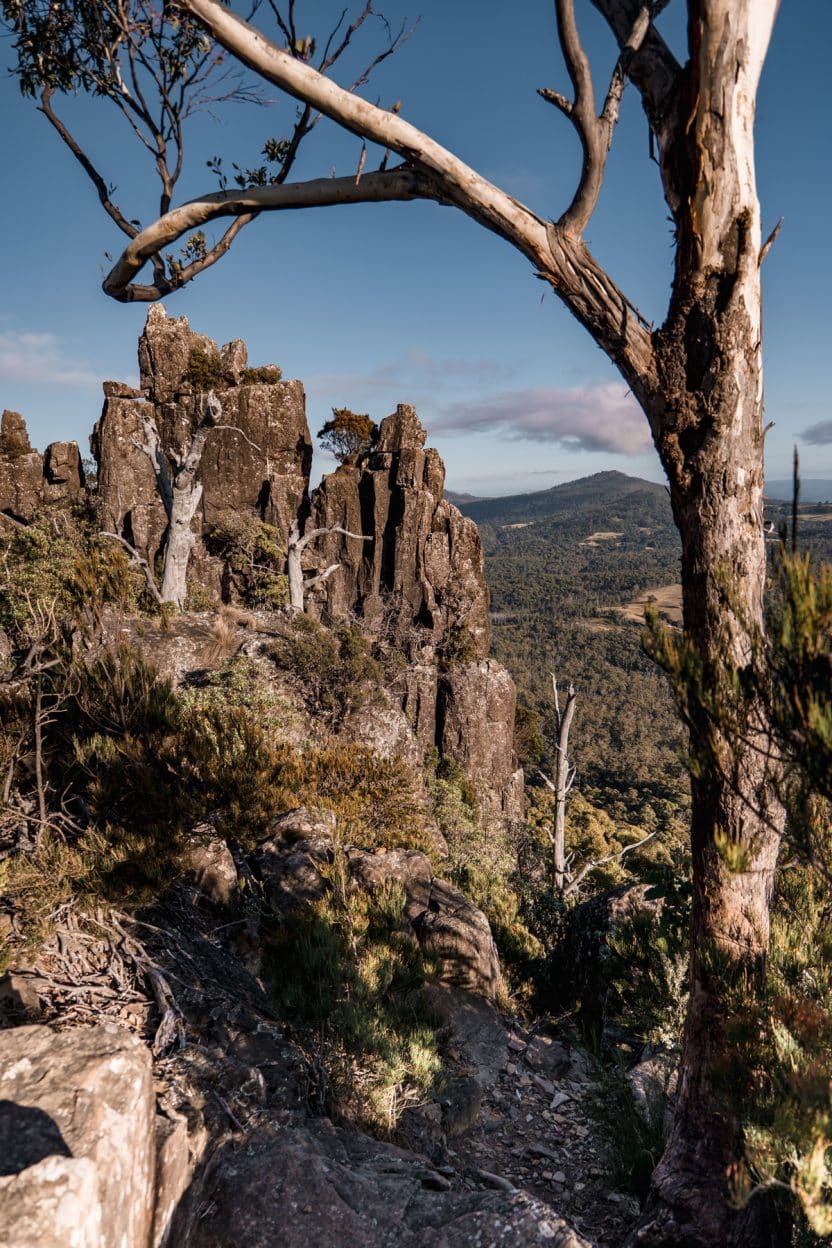
Nearing the summit.
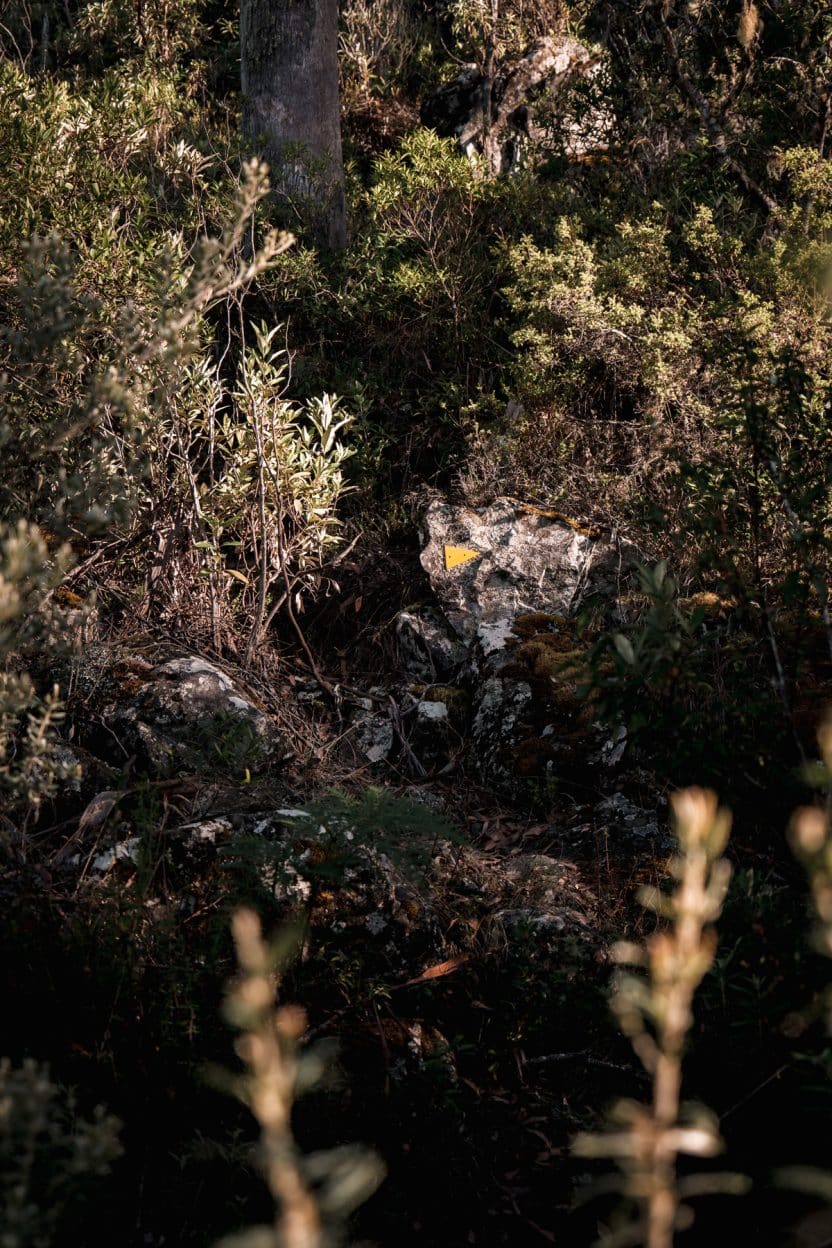
Small yellow arrows help guide the way.
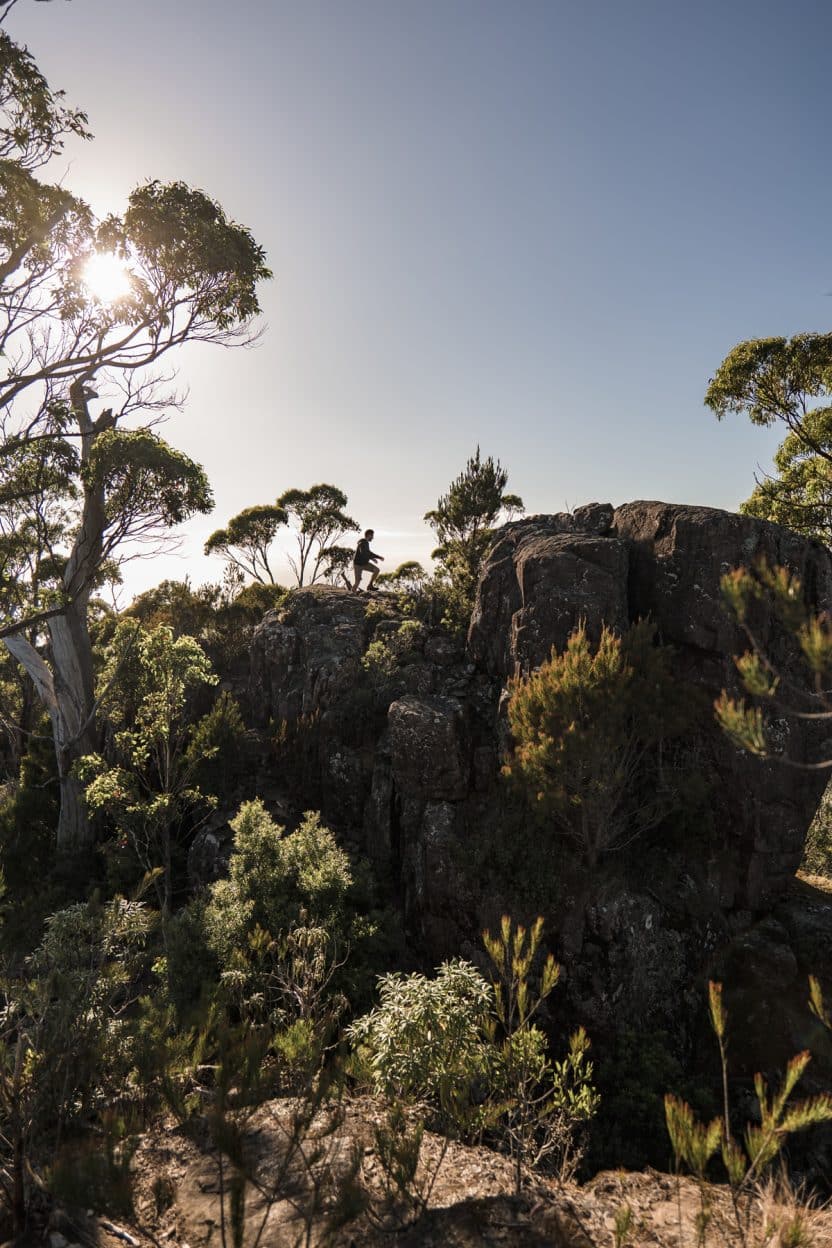
The lower peak of St Patrick’s Head.
And so, this is how we stumbled upon St Patrick’s Head, originally called Lumera Genena Wuggelina, meaning ‘great molar tooth’ in the traditional language of the Paredarerme Aboriginal people who have lived in and cared for the area for tens of thousands of years. The majestic crown of jagged rocks towers above the quirky village of St Marys, a 15-minute detour inland off the coastal Tasman Highway. It’s one of those rare examples of a charming Aussie country town, still seemingly untouched by the modern world, frozen in time, refreshingly lacking a trendy café and instead boasting its very own camel farm. It turned out to be the perfect spot to spend the night before setting out on our walk. On the morning we head off it is misty, chilly and quiet. The strong winds which have battered our previous few days in Tasmania have finally subsided, replaced by a heavy stillness with barely enough of a breeze to rustle the leaves of the trees overhead.
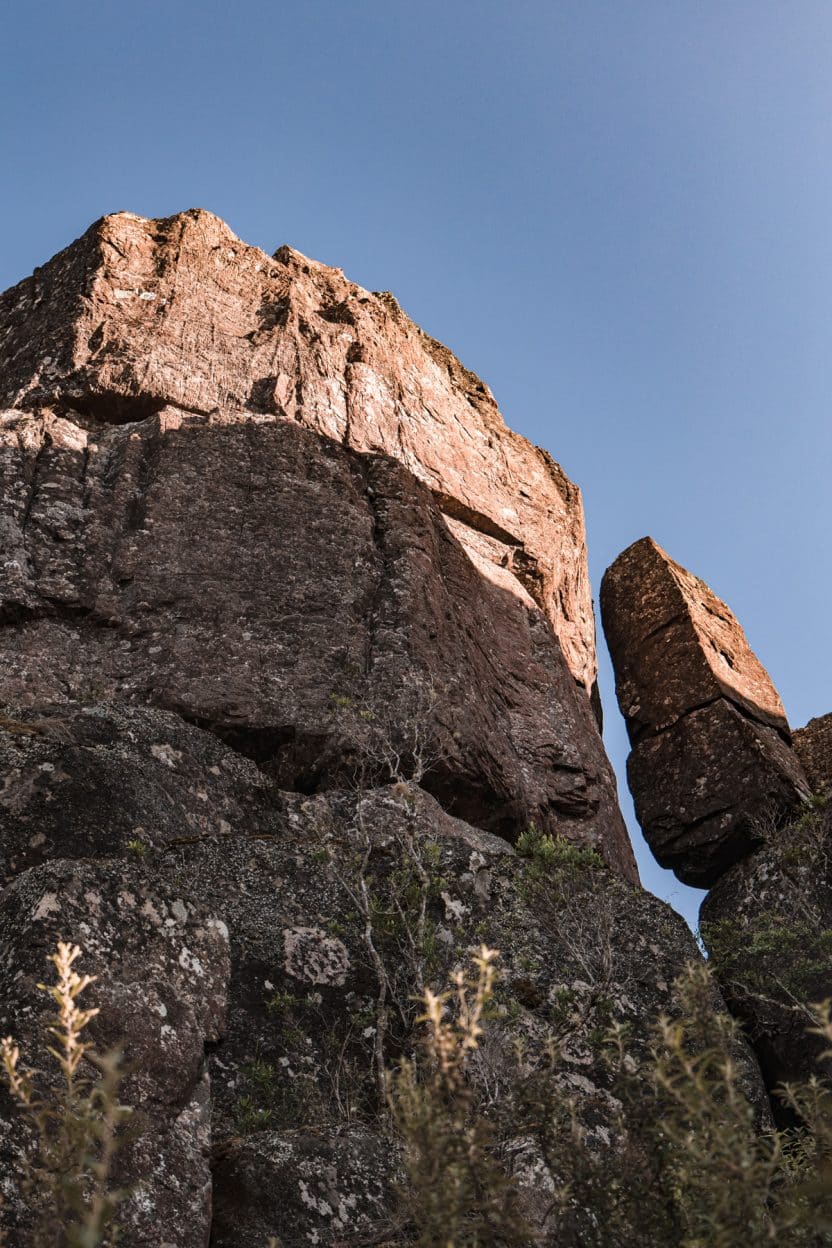
Rocky building blocks signalling the start of the scramble.
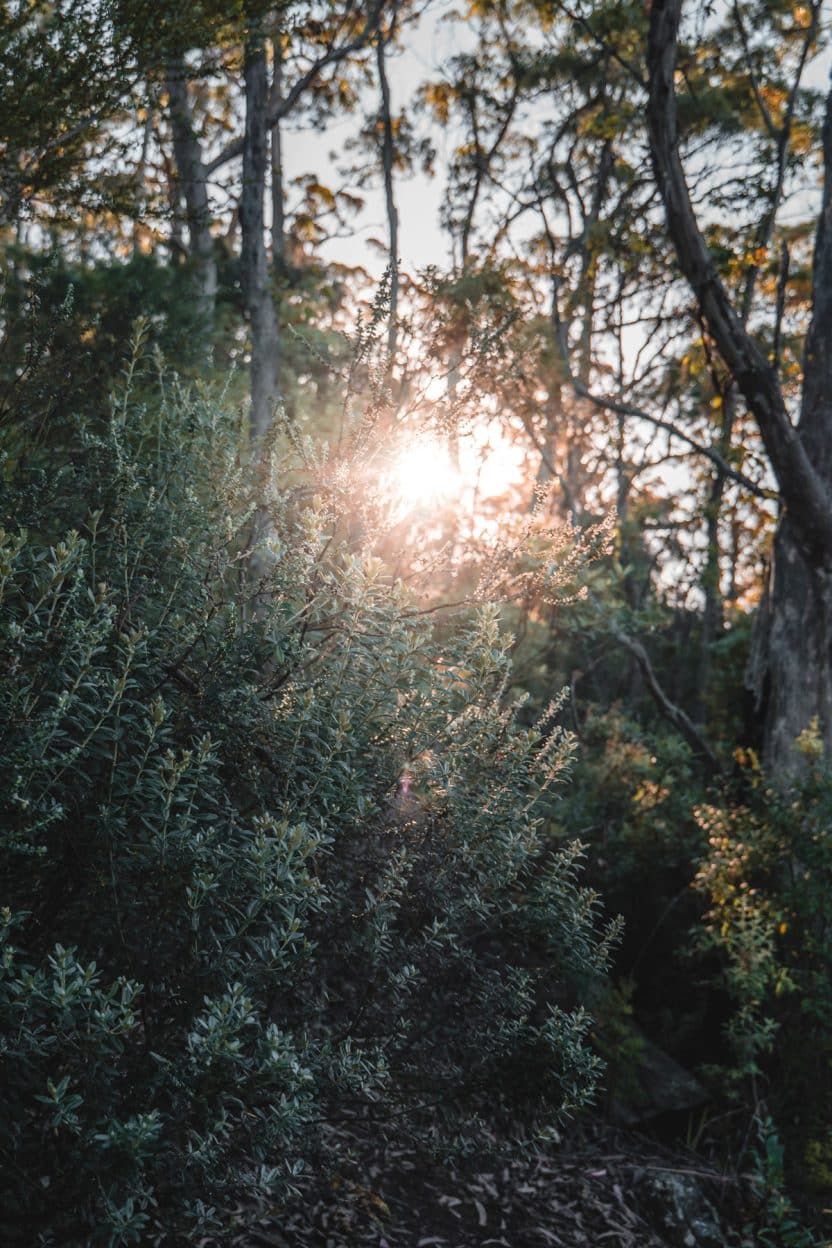
Morning light peeks through dense shrubbery.
The walk begins from the small car park at the end of St Patrick’s Head Road, a seven-minute drive east of St Marys. The last few hundred metres is unsealed, but relatively smooth and well-maintained so it’s suitable for two-wheel drive vehicles and, in our case, the rickety Sprinter van we find ourselves in.
A sign clearly marks the start of the walk, and a few minutes in we pass through the mysteriously named Bob’s Gate, behind which is another wooden sign rather grandly announcing that you’re entering St Patrick’s Head State Reserve.
This is where signs of civilisation begin to slowly fall away as we start our journey upwards. The track is well-defined, with the occasional addition of a helpful yellow arrow to guide us along, and thick ferns and shrubs crowd us in slightly on either side, allowing only thin ribbons of the low-lying morning sun to peek through. As we’ve come to discover is common in Tasmania, the plants feel plucked straight from the Jurassic period – which is jarring against the ever-shrinking pockets of farmland we glimpse over our shoulders as we climb. The occasional lone cow’s moo echoing up from the valley below completes the juxtaposition.
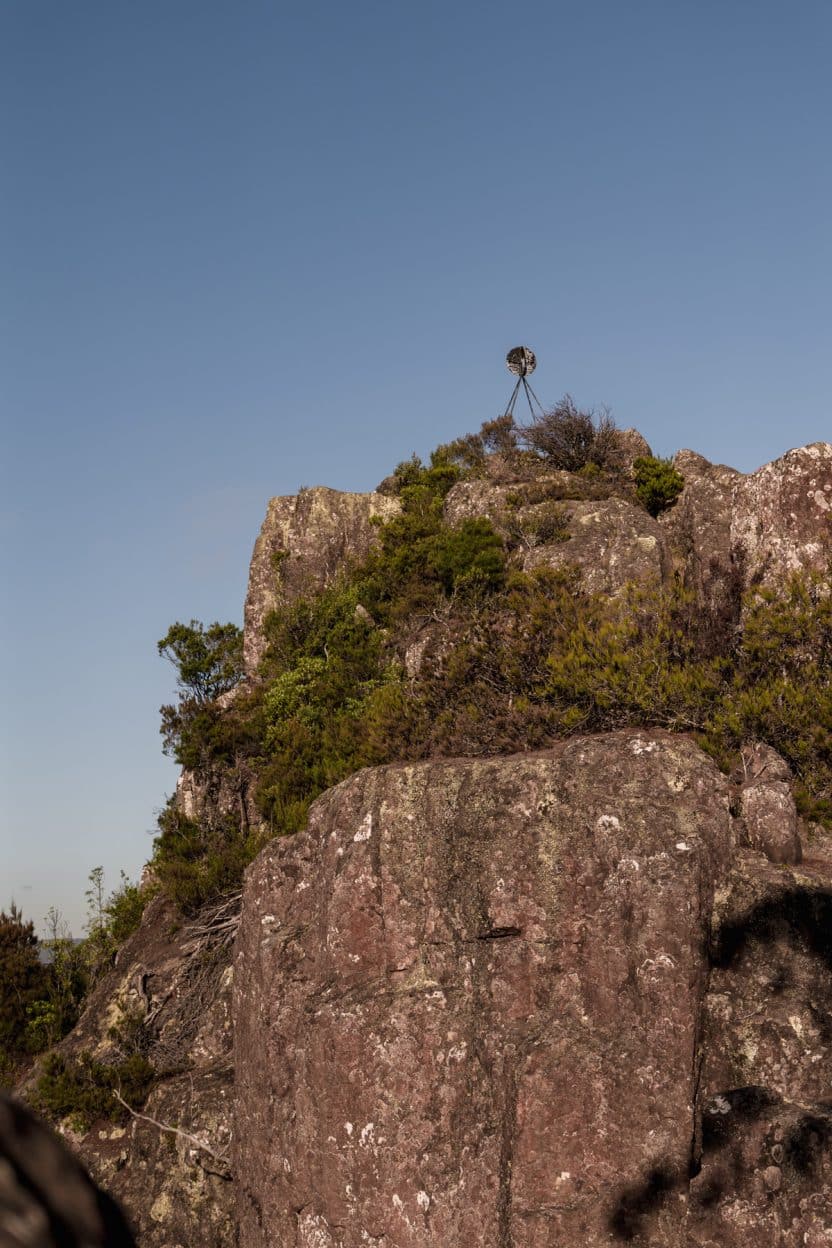
Most of the walk follows a relatively gentle, zigzagging and steady incline with some sections partly blocked by fallen eucalyptus trees requiring a quick spot of clambering to get over or under. But before long, we find ourselves popping out above the treetops, and the views start to materialise as the morning mist is slowly burnt off the horizon. To our left as we climb, we spot a majestic red-brown undulating rock formation rising into the skyline, atop which sits a glinting silver trig point like a jewel in the rocky crown. The sudden change in terrain is our cue to start scrambling.
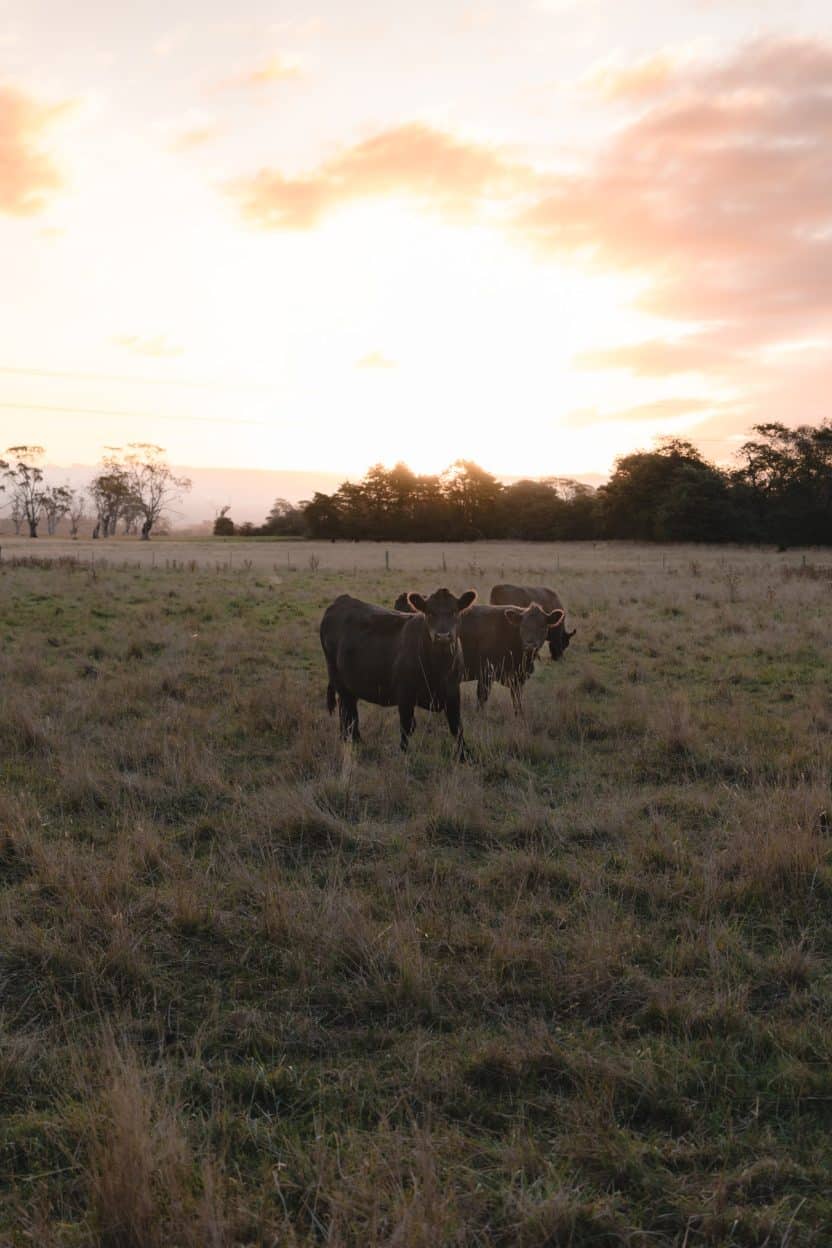
Curious cattle in the fields surrounding the base of the hike.
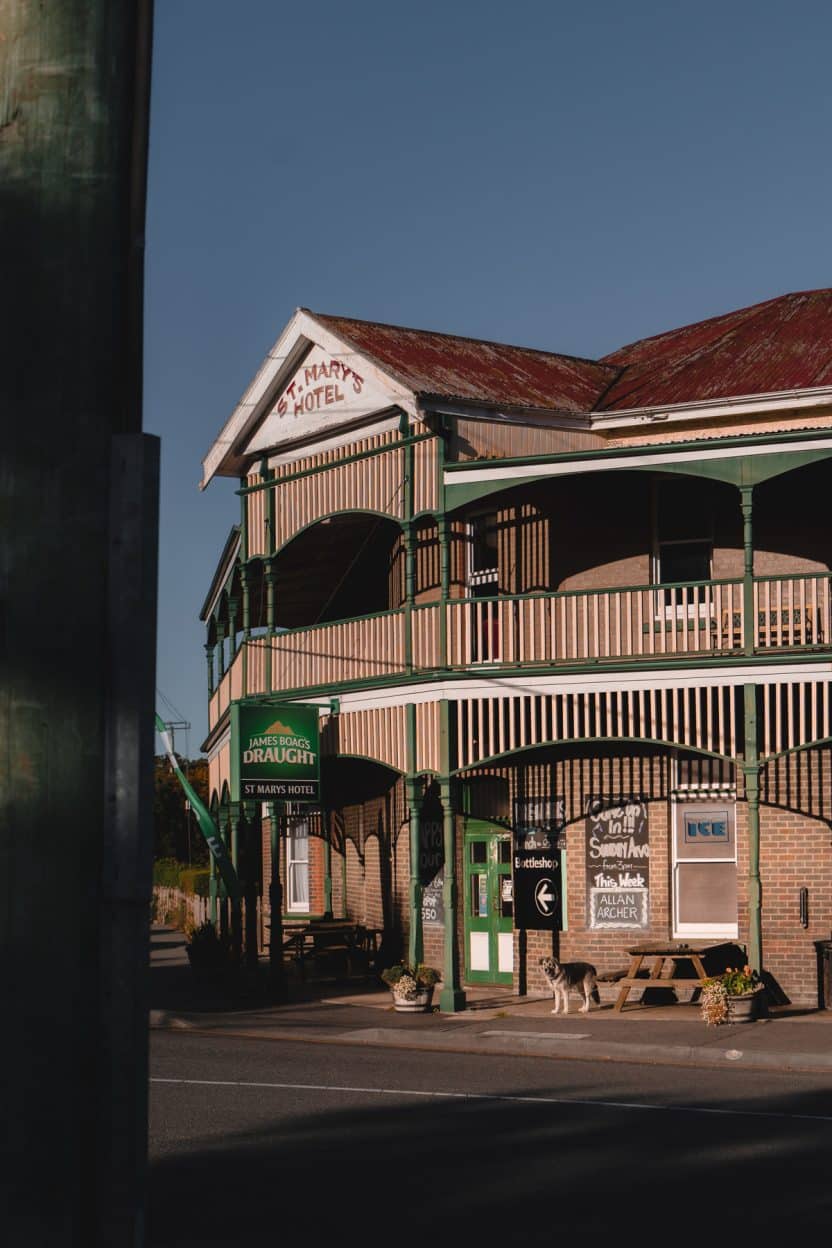
Golden hour outside St Marys Hotel.
The final push is short and challenging (and probably getting towards the upper limit of what one might attempt with a small child on their chest) but after a few minutes, we finally claim our reward – utter silence and stillness, a full 360-degree view of the surrounding countryside and a hyper-saturated blue ocean staring back at us from below. The beaches of Four Mile Creek, Mariposa and Steels beam up at us from the north, and Seymour, Templestowe and Lagoons Beach from the south.
After some quiet contemplation, we begin our trek downwards and are treated to even clearer views across the now fully sunlit valley and surrounding mountain ridges. We’ve encountered nobody else apart from a few wallabies along the way, felt that sense of achievement we’d been looking for and the youngest member of our troupe is fast asleep, having dozed off shortly after beginning our descent.
It seems that in both hiking and parenting, sometimes efficiency is the name of the game.
